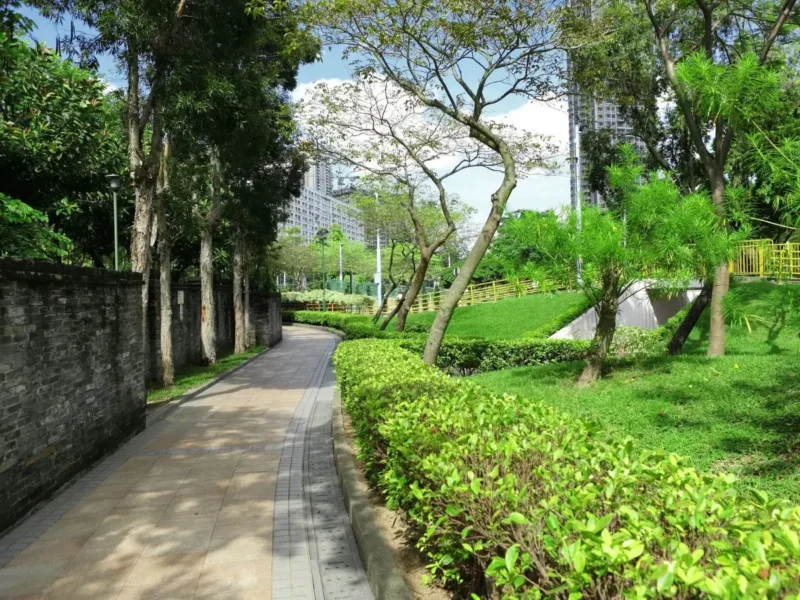How can organisations involved in development projects ensure that their investment in habitat creation is not lost to easily avoidable oversights?
Biodiversity Net Gain, or BNG, is an approach that aims to leave the natural environment in a better state than it was before. Under the Environment Act 2021, it is a mandatory requirement for developers (in England) to demonstrate that their project delivers 10% net gain in biodiversity.
We have seen a massive reduction in biodiversity due to human activity, with the Natural History Museum reporting that overall, 41% of species have declined since the 1970s. Of these, 26% of mammals are at risk of extinction and 22% of bird species have declined.
Couple this with the climate emergency and it is clear that the natural environment is under immense pressure. An updated analysis of the annual UK temperature records from the Met Office shows that since 1884 all of the UK’s ten warmest years have occurred since 2002; whereas none of the ten coldest years have occurred since 1963.
BNG is delivered in accordance with a mitigation hierarchy where developers must first consider how they can avoid habitat loss altogether, mitigate for habitat loss by creating new habitats on-site, and lastly compensate for lost habitat off-site. It is highly likely that many developments will have to rely on off-site compensation schemes due to the lack of opportunity to create new habitats on site.
What this means for developers is that BNG will require a significant investment in time, money, and resources – no matter how they deliver their obligation. Achieving BNG will involve ecological assessments, landscape plans, and the development of 30-year habitat management plans, along with the physical habitat creation.
These are all services that Ecus can, and is, delivering, and the principles of BNG are now widely accepted. In fact, there are some excellent examples of where large-scale habitat creation has been delivered to compensate for habitat loss on projects. Large infrastructure organisations such as Network Rail already have their own internal BNG targets ahead of the introduction of mandatory requirements. Ecus, in partnership with Volker Rail, has delivered in excess of a contractually required 10% net gain target, with the planting of around 20,000 trees in the Peak District National Park. This is part of the Hope Valley Line scheme to improve the line between Manchester and Sheffield.
Projects like this, however, bring a new set of challenges for developers to consider on projects where large-scale habitat creation is required. Creating new habitats is one thing, but maintaining them in the early stages of their establishment is another equally important step.
Challenges maintaining Biodiversity Net Gain
This was put into stark focus recently where National Highways are having to replant more than 160,000 trees on a new stretch of A14 after many died soon after being put into the ground. As part of the project more than 860,000 were planted on the £1.5bn stretch between Huntingdon and Cambridge before it opened in 2020. This is habitat creation on a massive scale and one that should be recognised and commended. But the scale of the losses also highlights the challenges that come with these projects.
So how can projects such as these and the organisations involved ensure that the resulting investment in habitat creation is not lost to easily avoidable oversights?
Like any good project, it’s all in the planning and an appreciation of the constraints that go with habitat creation. In particular, the timing of when specimens are planted and the aftercare of trees and shrubs are critical to the success, or otherwise, of habitat creation schemes. On the A14 extreme heat during the summer was identified as one of the main causes of the losses. Young trees and shrubs are particularly susceptible to weather extremes as they become established, and aftercare must be considered early in a project to reduce losses.
Collaboration to avoid losses
Unfortunately, it is too often the case that planning for aftercare is overlooked or considered too late in a project to prevent these situations. This needs to be agreed between clients, contractors and their supply chains early in a project and detailed in the habitat management plan.
We may not be able to predict the future, but we know the climate is changing and increasingly extreme weather events need to be part of our decision-making. A thoughtful plan of aftercare will at a minimum prevent foreseeable problems from hindering projects or undoing BNG successes.
Planting times
We also need to be mindful of when we plant our specimens. For the vast majority of trees and shrubs this is during the winter months, but planting windows are growing shorter due to climate change. Colder temperatures which suit planting better are arriving later in the year and spring is starting earlier.
The changing climate also influences planting specifications. The habitats we create now will be here in decades, even centuries to come when the climate will almost certainly be different based on current predictions. Choosing climate resilient species or even species that are not currently common to Britain will become more important to achieve long-term results. In doing so we also need to consider planting a diverse mix of species to ensure our new habitats are delivered with both climate and disease resilience in mind.
Add into the mix supply chain constraints due to the immense demands for trees and grass seed, for example, from large-scale infrastructure projects such as HS2 and a reduced grass seed yield due to recent summer droughts and it’s clear that the delivery of habitat creation schemes is more complex than first meets the eye.
BNG will contribute to restoring our lost habitats – so let’s not take one step forward and two steps back by letting aftercare become an afterthought.







